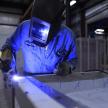
11th
Indoor Air Quality: Should it be taught in the classroom?
by Michael Taranto, Director
The COVID-19 pandemic has left an imprint on society that will remain for decades to come. However one positive take away has been the level of attention placed on indoor air quality.
In a recent article published by ABC News Environmental Scientist, Donna Green, of the University of NSW, said "One thing COVID has done is make us aware that we need to treat the quality of our air, and the air we put in our bodies, the same as water."
"We actually need to make sure that the air is healthy for us and is good for our bodies," Associate Professor Green said.
This is something we believe could and should be taught in our schools and implemented as part of the curriculum.
The University of Queensland (UQ) recently conducted a study of IAQ in the classroom, led by research fellow Stephen Snow, a behavioural scientist, which involved placing carbon dioxide sensors in 67 classrooms at different times to assess ventilation.
The results showed almost two thirds of the classrooms had CO2 levels that would place students at high risk for transmitting COVID-19.
Dr Snow suggested all classrooms should be fitted with CO2 monitors to help reduce the spread but also educate children about the importance of indoor air quality.
And while it may seem a far cry from the standard english, history and maths, there were crossover opportunities to involve the real world results in the day to day lessons.
Dr Snow highlighted the fact that CO2 monitoring produced huge data sets that could be analysed in both maths and science lessons, while also raising the awareness of the importance of indoor air quality and how it impacts both the students health and also their ability to learn.
The students could also conduct real-world experiments, for example monitoring the impact of opening windows on one side of the classroom and not the other. Or how 'airing out' the room during lunch time could affect the air quality when they return to the room.
QED wholeheartedly support initiatives such as this and would be happy to help facilitate further action in this arena, as we are doing with our participation in the new Queensland University of Technology study into IAQ.
Categories
Recent Posts
Trichloramine and Indoor Air Quality in Swimming Pools
05th Nov
For swimmers and pool workers alike, the characteristic "chlorine smell" at indoor swimming pools is part of the experience. Howev...
Indoor Air Quality Takes Centre Stage: A New Government Report on Airborne Virus Transmission
30th Sep
The importance of Indoor Air Quality (IAQ) has gained significant attention following the release of a groundbreaking report from Australia‚...
Changes to the workplace exposure standard for welding fumes
15th Mar
On January 18, 2024, SafeWork Australia made a significant adjustment to the Workplace Exposure Standard (WES) for Welding Fume (not otherwi...

















